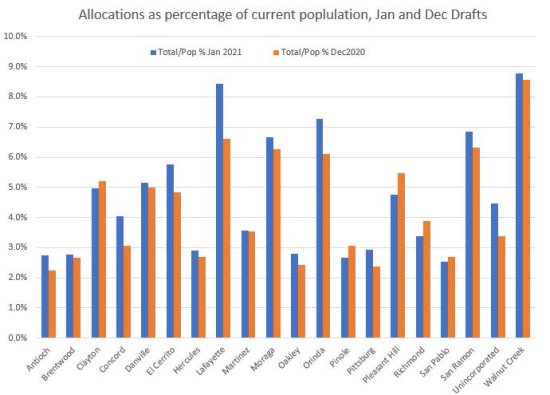
| ||||||
The FY 2020-21 budget required the city to reduce spending and instituted a hiring freeze in case of dire financial consequences stemming from the pandemic, according to Planning and Building Director Greg Wolff in his June 14 staff report presented to the city council. While short-staffed and responding to the demands of the pandemic response, customer service and daily planning activities took precedence over long-range tasks.
The Planning Department experienced a significant increase in both planning and building permit applications throughout 2020, and planning staff also took on a number of additional tasks beyond the traditional responsibilities of the department during the COVID-19 pandemic, Wolff noted in the report. "Planners worked with the Engineering Department and Chamber of Commerce to manage adjustments to City code to aid local businesses. For example, the department worked with City Manager [Niroop] Srivatsa to establish a business assistance program and using public parking spaces for outdoor dining in the downtown to support local business operations and comply with public health orders."
The city council was asked to approve state mandated tasks and offer direction and prioritize non-mandated tasks for the 2021-22 Work Plan.
Ten of the 12 priority tasks in the proposed 2021-22 Work Plan are mandated by the state. The other two - updating the tree ordinance and implementing a call-before-you-dig-program - related directly to public health and safety, Wolff said. The 10 state-mandated tasks include the Housing Element Update; Housing Element Annual Progress Report; AB 2923 - BART Transit-Oriented Development Implementation; AB 939 -Waste management, recycling, composting, programs and annual report to state; SB 35 - Develop checklists, applications, and comply with streamlining for affordable housing; SB 743 - Implement transition from Level of Service to Vehicle Miles Traveled; AB 2911 Compliance - work with Cal Fire to identify all areas of 30+ homes with only one ingress/egress and develop mitigations; Water Efficient Landscape Ordinance - adopt an ordinance and submit annual reporting on all projects to the State; General Plan Update; and Regional Housing Needs Allocation (RHNA) - participate in and comment on RHNA allocations.
The Housing Element is one of seven required elements of the General Plan. Lafayette last updated its Housing Element in 2015 and is required by state law to do so every eight years. The Housing Element Annual Report and the comprehensive Housing Element Update are required by law to be completed by January 2023.
Of the non-mandated list presented, Council Member Carl Anduri made a motion to add as secondary priorities to the list of 12 mandated items that Planning bring a recommendation on how to handle the Density Bonus applications to the council (review of hearing body for concessions and waivers); and explore an electrification ordinance and land value recapture. Council Member Gina Dawson said the jobs housing balance, which would analyze loss of office and commercial to multiple-family residential development, is important for economic recovery and commercial planning and asked that it be added as a priority item Wolff said there will be some level of analysis of the jobs housing balance through the General Plan Advisory Committee, but the item was added as a priority non-mandated item to the Work Plan. The motion was approved unanimously, with Council Member Cam Burks absent.
Discussion at the council meeting later turned to the Association of Bay Area Governments (ABAG) Regional Housing Needs Allocation and how Lafayette numbers remain the same at 2,114 additional units as part of Plan Bay Area 2050, which was created to distribute the regional housing need of 441,176 units established by the State Department of Housing and Community Development. The city has until July 9 to submit an appeal.
According to Srivatsa, grounds for appealing are very precise and difficult. Mayor Susan Candell and Council Member Gina Dawson drafted a letter June 8 to ABAG, asking to review the inputs and outputs for the model that generated the RHNA allocations. The letter stated, in part, "We are concerned the methodology results in a disproportionate increase in the number of units assigned to Lafayette, perhaps as the result of some mathematical error. The allocation to Lafayette jumped by 28% between the proposed methodology of December 2020 and the draft methodology of early 2021, from 1,660 units to 2,114 units. We have analyzed our 2020 and 2021 allocations as a proportion of our existing population, which shows that the City's increase to 2,114 is disproportionate to the increases seen in other jurisdictions of the County."
Anduri suggested the appeal include the fact that Lafayette has more areas in high severity fire zones, and how avoiding building in those areas would cause inconsistent development in other areas. Staff will meet with the city attorney to craft an argument to bring to council on June 28.
Reach the reporter at:
